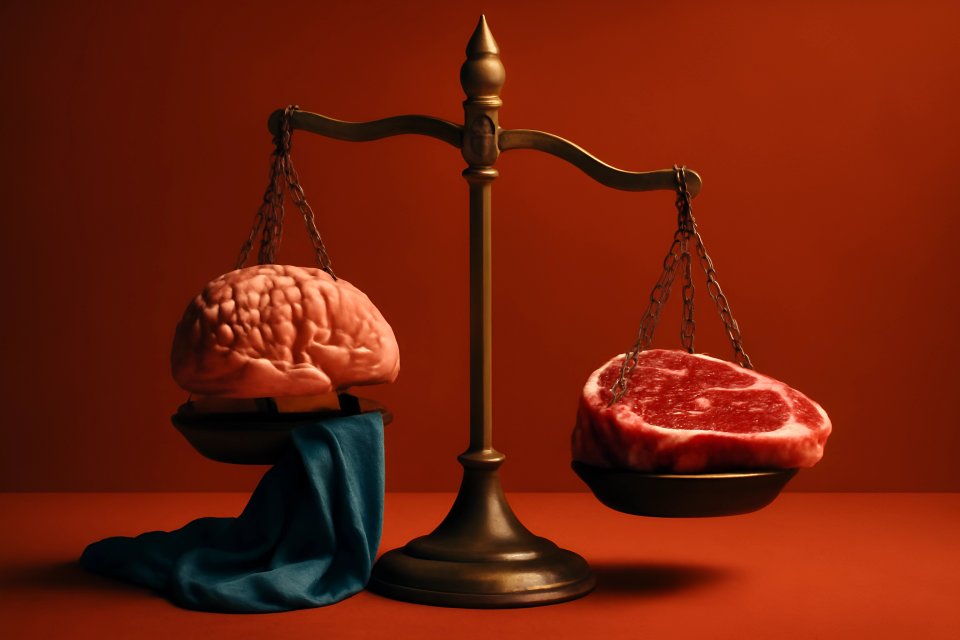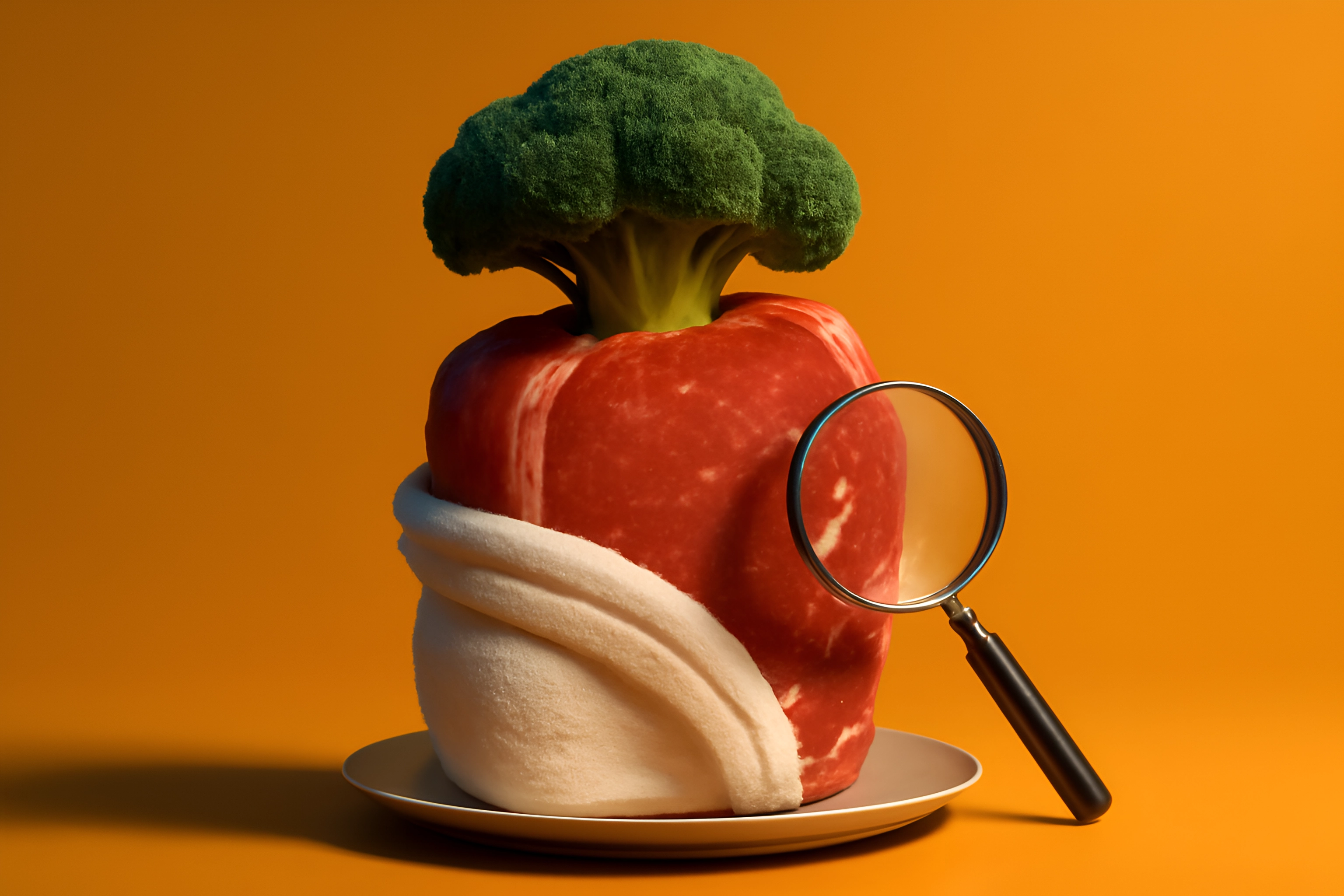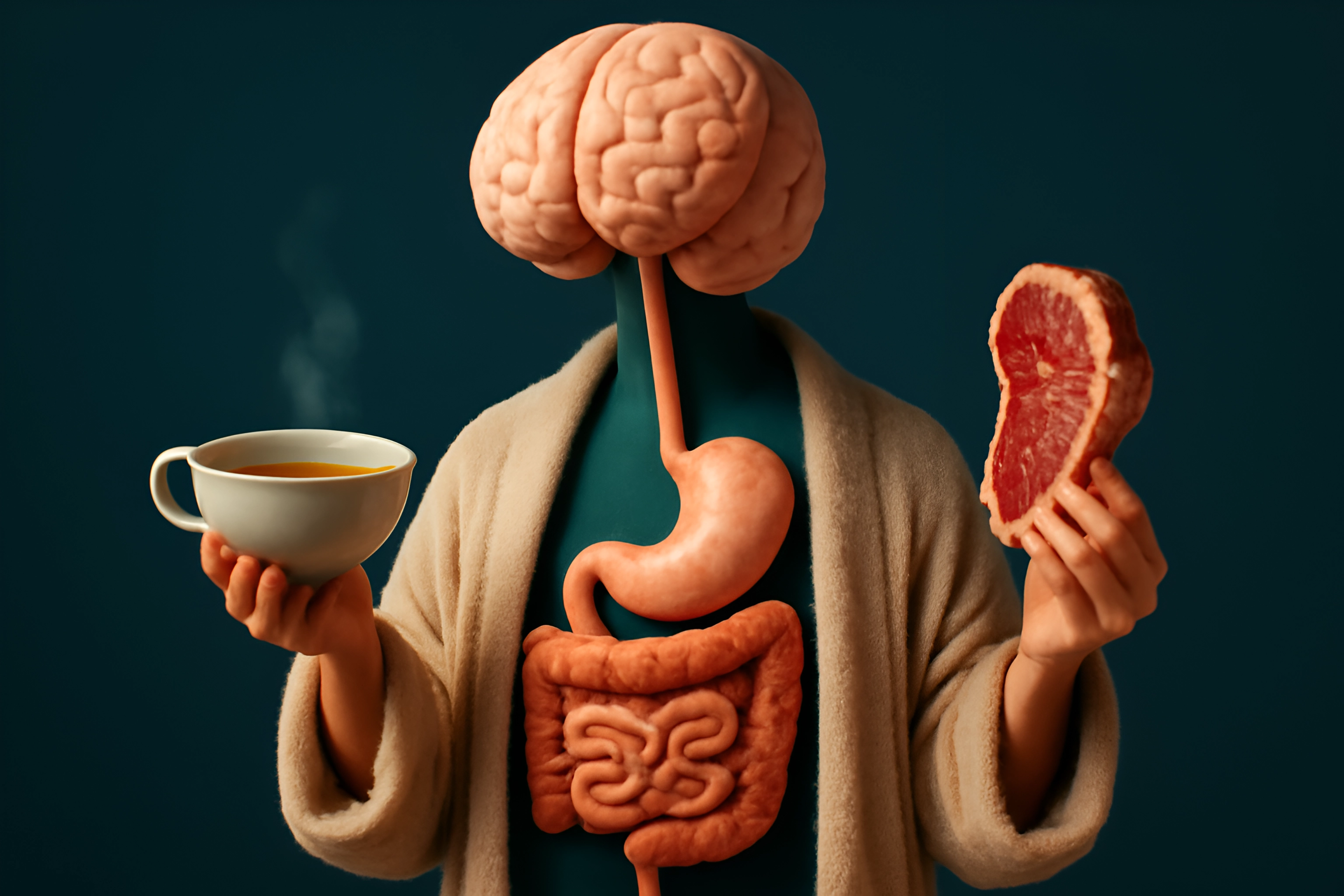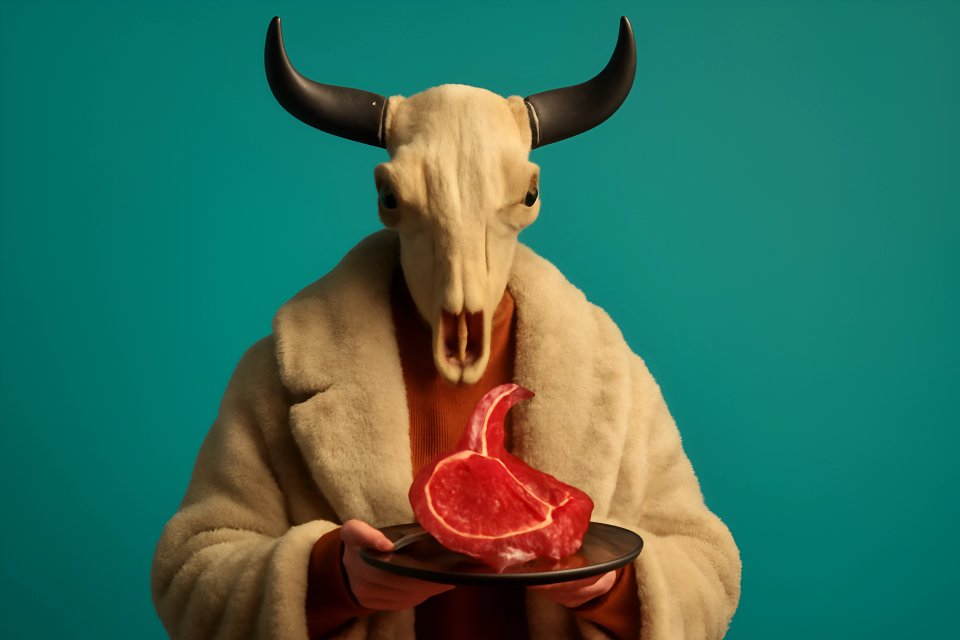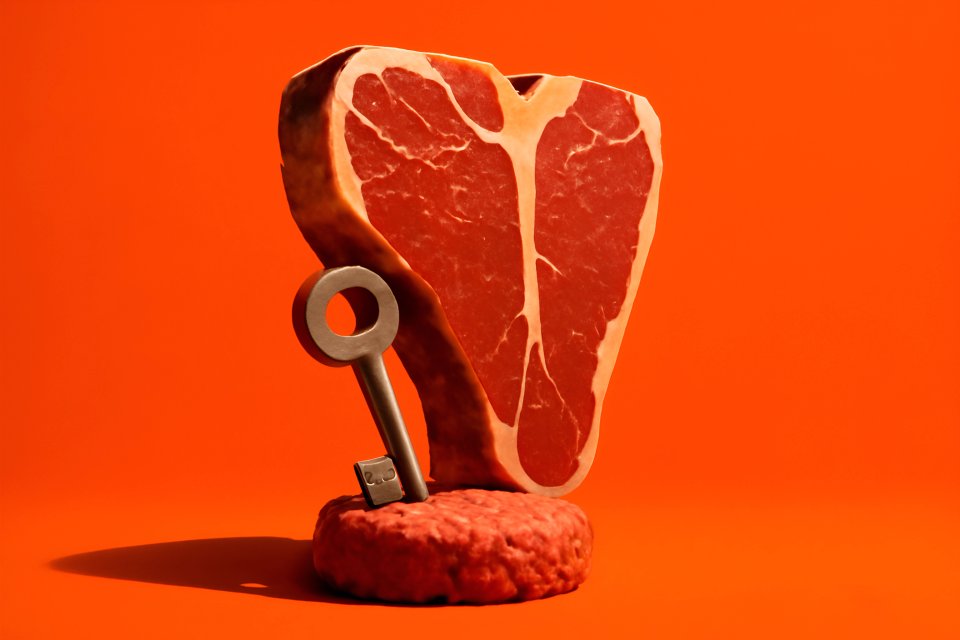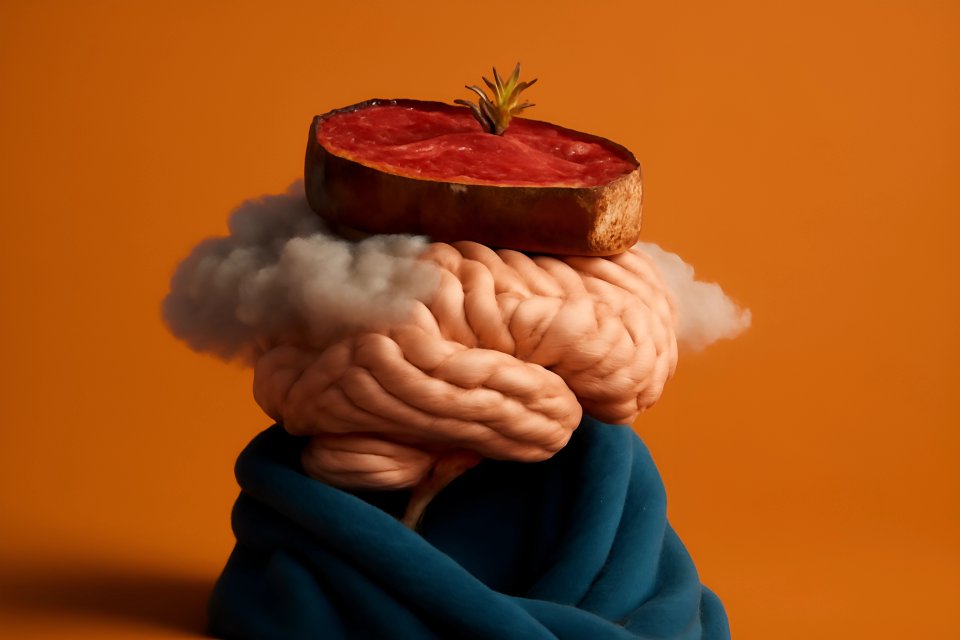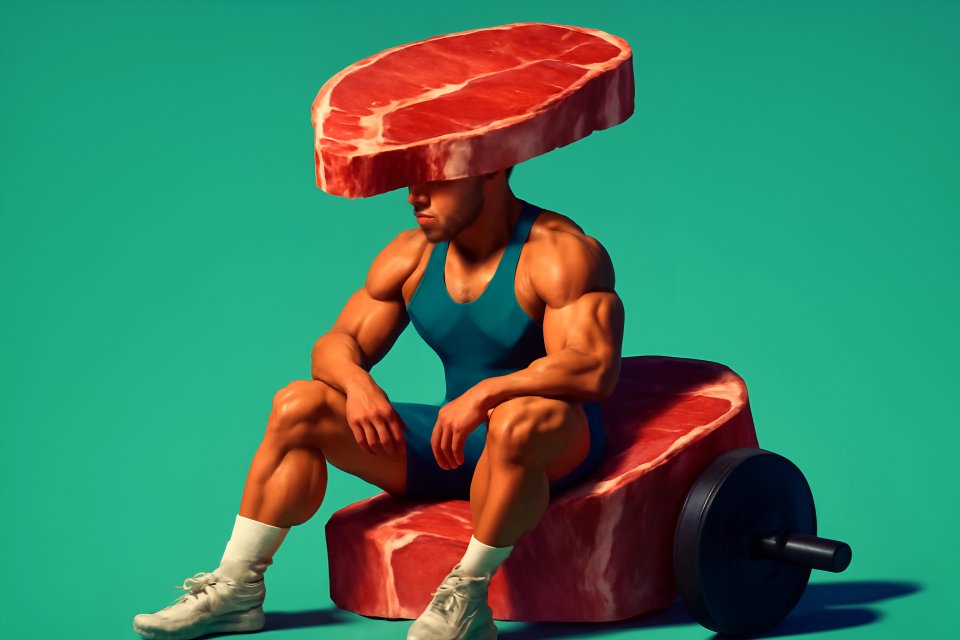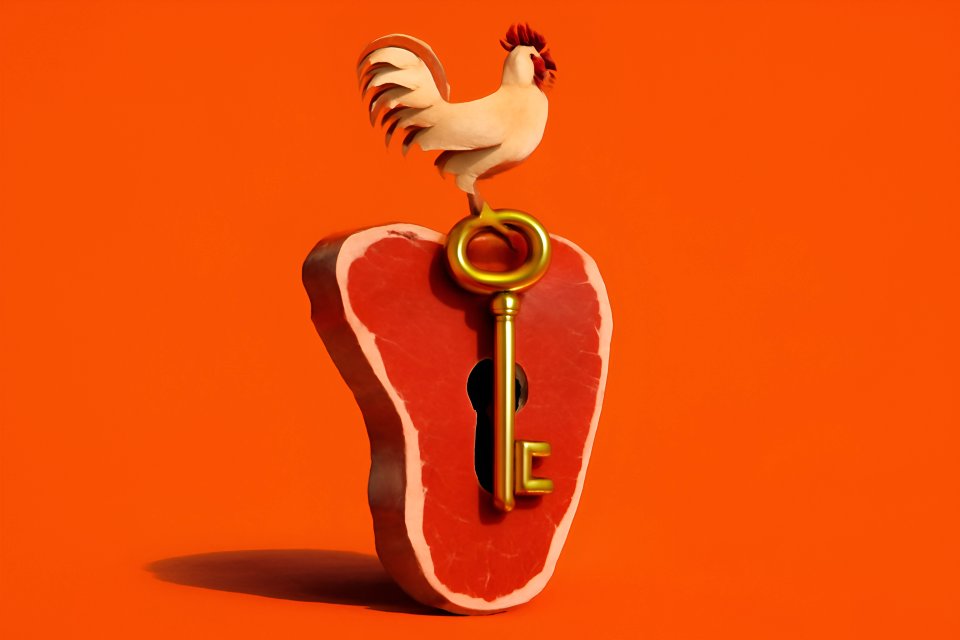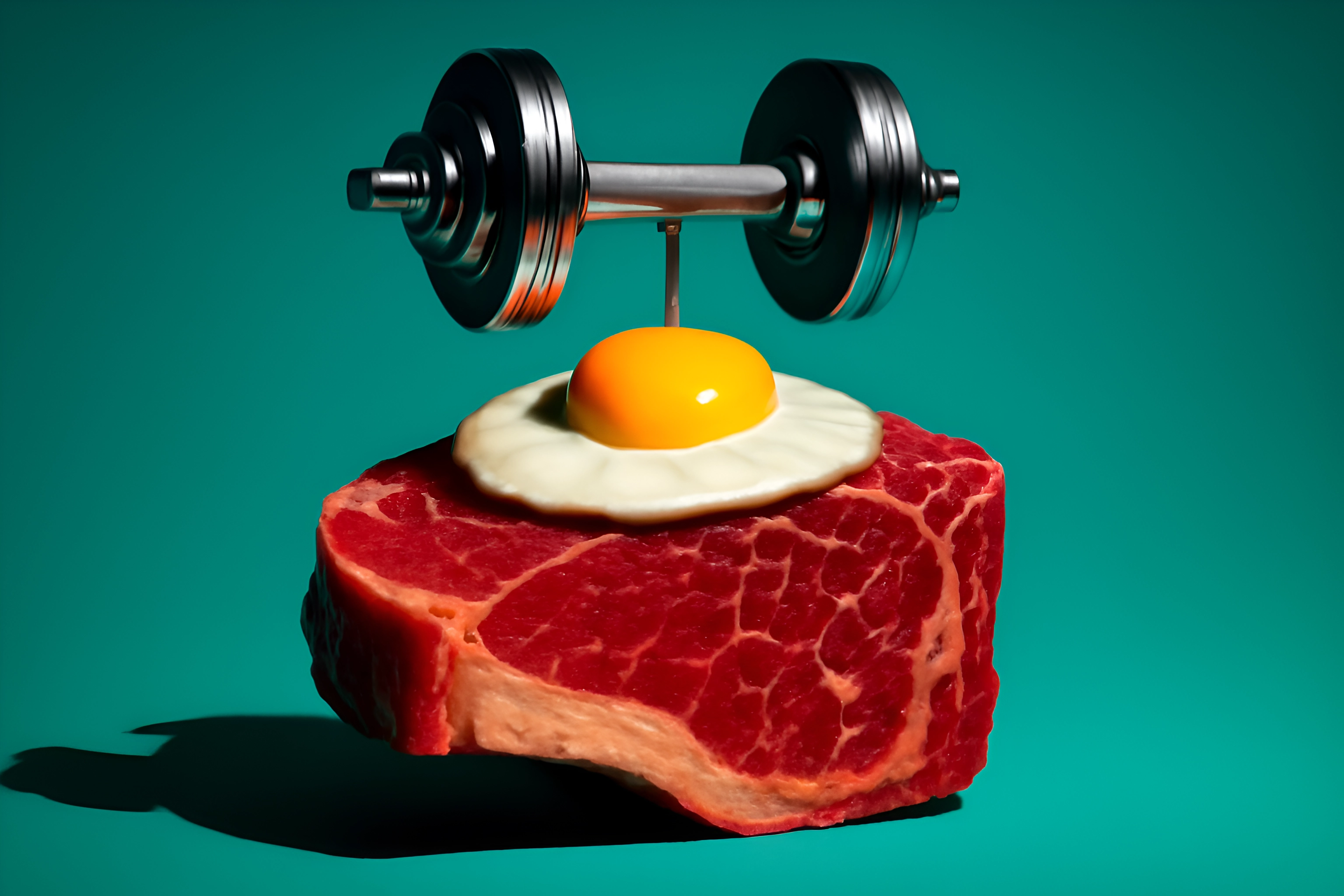
Feeling good on the carnivore diet, but deep down, you sense there's another level? Another gear of energy, a sharper mental edge, a more profound vitality you could reach? Or perhaps you've hit that frustrating plateau, that wall where progress stalls, and you're left wondering, "What gives?" The answer, my friend, might be hiding in plain sight, not in what you're eating, but in the balance of it.
While the beauty of the carnivore diet lies in its magnificent simplicity—focusing on nutrient-dense animal products—there's a subtle art to truly mastering it. This art revolves around understanding and fine-tuning your macronutrient ratios, specifically the delicate dance between fat and protein. This isn't about restrictive dogma; it's about unlocking your body's innate potential. At HealingCarnivore, we believe in empowering you with knowledge, and this post is your roadmap. We'll dive into the science-backed insights and practical, actionable strategies to help you understand, experiment with, and ultimately master your optimizing fat to protein ratios carnivore diet for a life brimming with energy, mental focus, and unstoppable physical vitality.
Why Fat and Protein Ratios Matter on a Carnivore Diet (The Science Simplified)
So, why all this fuss about ratios? Can't you just eat meat and thrive? For many, yes, the initial benefits are astounding. But to truly elevate your experience, to tap into that peak performance, understanding the roles of fat and protein—and their interplay—is paramount. It’s about giving your body the precise fuel mixture it craves for optimal function.
The Role of Fat as Primary Fuel
Think of fat as the high-octane, clean-burning fuel for your carnivore engine. When you prioritize fat, your body shifts into ketosis, a metabolic state where fat, rather than glucose, becomes your primary energy source. This means sustained, stable energy throughout the day – say goodbye to those jarring energy crashes and hello to consistent vigor. As highlighted in Dr. Kiltz's guide to carnivore macros, a ratio of 70-80% fat to 20-30% protein by calories is often cited to optimize this ketogenic state.
But fat's role extends far beyond just energy. It's crucial for hormone production and balance, the very messengers that govern your mood, metabolism, and overall well-being. Furthermore, dietary fat is essential for the absorption of vital fat-soluble vitamins—A, D, E, and K. Without adequate fat, these nutrients, even if present in your food, can't be properly utilized by your body, as detailed in research on fat-soluble vitamin absorption. These fat protein ratio benefits are foundational to your health.
The Role of Protein for Structure and Function
If fat is the fuel, protein is the building block. It's essential for the repair, growth, and maintenance of every tissue in your body, especially your muscles. Whether you're an athlete pushing your limits or simply aiming to maintain a strong, resilient physique, adequate protein is non-negotiable. Examine.com's protein intake guide underscores protein's critical role in these structural functions.
Protein also plays a significant part in satiety, helping you feel fuller for longer and regulating your appetite. And what about the concern that too much protein will turn into sugar? This refers to a process called gluconeogenesis (GNG). However, as explained in resources like Wikipedia's entry on Gluconeogenesis, GNG is largely a demand-driven process, not something to fear, especially when your fat intake is sufficient to meet your energy needs. Your body is smart; it will primarily use protein for its vital structural and functional roles when fat is readily available as fuel.
The "Goldilocks Zone"
Finding your "Goldilocks zone" for fat and protein is the ultimate goal. It’s not about a one-size-fits-all prescription, but a personalized balance that makes you feel your absolute best. Too little fat can leave you feeling drained, foggy, and constantly hungry. On the other hand, while less common, an excessive amount of protein relative to fat can sometimes lead to feeling less than optimal, or in extreme historical contexts, issues like "rabbit starvation" (protein poisoning from extremely lean meat diets without fat), a concept detailed in discussions on protein toxicity.
This balance is the cornerstone of carnivore performance nutrition. When your ratios are dialed in, you'll experience a profound shift: consistent energy that powers you through your day, mental acuity that keeps you sharp and focused, and physical output that allows you to perform at your peak, whether in the gym, at work, or in life. It’s about transforming from merely surviving to truly thriving.
Understanding Common Fat-to-Protein Ratios: Where to Start?
Navigating the world of macronutrient ratios can seem daunting at first, but let's demystify some common starting points. Remember, these are launchpads for your own experimentation, not rigid doctrines. The journey to optimizing fat to protein ratios carnivore diet is personal, and your body will be your ultimate guide.
Common Starting Points
You'll often hear ratios discussed in terms of percentages of total calories or by grams. It's important to understand the distinction. A frequently cited starting point is 70% fat / 30% protein by calories. Some individuals, particularly those seeking deeper ketosis or managing certain health conditions, might aim for 80% fat / 20% protein by calories, a ratio supported by resources like Carnivore Snax's macro guide. For a 2,000-calorie diet, this translates to approximately 155–177g of fat and 100–150g of protein.
Another way to look at it is by grams. Ratios like 1:1 or 2:1 fat-to-protein by grams are popular. For instance, a 2:1 ratio means for every gram of protein, you consume two grams of fat. As Dr. Anthony Chaffee discusses, a 2:1 fat-to-protein ratio by weight (e.g., 120g protein + 240g fat) can be highly effective for satiety and energy stability. This often aligns closely with the higher fat percentages by calories.
Context is Key
It cannot be stressed enough: these are starting points. Your individual needs will vary based on your activity level, health goals, metabolism, and how long you've been on the carnivore diet. Don't get bogged down in hitting exact numbers from day one. The goal is to use these ratios as a framework to begin understanding how different balances affect you.
Think of it like this: are you aiming for general well-being, aggressive weight loss, or peak athletic performance? Each goal might nudge your ideal ratio slightly. The key is to start somewhere reasonable and then listen intently to your body's feedback.
Visualizing Ratios
To make this more tangible, let's consider what these ratios look like on your plate. A standard ribeye steak, with its beautiful marbling, often naturally falls close to a 1:1 fat-to-protein ratio by grams. If you're aiming for a higher fat ratio, like 2:1 by grams, you might choose an even fattier cut like pork belly, or supplement a leaner steak with generous amounts of added tallow, butter, or ghee.
For example, if you have a piece of steak providing 50g of protein, to achieve a 2:1 fat-to-protein ratio by grams, you'd aim to consume 100g of fat with that meal. This could come from the fat inherent in the meat, plus added fats. Understanding these practical applications will make adjusting your intake much more intuitive.
Signs Your Fat-to-Protein Ratio Might Be Off: Listening to Your Body
Your body is an incredibly intelligent system, constantly sending you signals about what it needs. When it comes to optimizing fat to protein ratios carnivore diet, learning to interpret these signals is your most powerful tool. Forget rigid rules and dogmatic pronouncements; your biofeedback is king.
Symptoms of Too Low Fat / Too High Protein (Relative to Fat)
Are you dragging yourself through the day, even though you're eating plenty of meat? This could be a sign your fat intake is too low relative to your protein. When fat is insufficient, your body might struggle to maintain robust energy levels. This often manifests as persistent low energy, a general feeling of fatigue, or simply feeling "flat" and uninspired. Many experience this as a kind of "carnivore flu" that lingers if fat isn't adequately supplied.
Brain fog or difficulty concentrating is another common complaint. Your brain loves fat, and when it's not getting enough, mental clarity can suffer. You might also find your meals aren't satisfying, leading to frequent hunger or nagging cravings, especially for fatty foods. For some, stalled weight loss can occur, or even digestive issues like constipation. And don't ignore physical signs like dry skin or hair; these can indicate issues with fat-soluble vitamin absorption, which, as noted by Ancestral Supplements, is dependent on adequate dietary fat.
Symptoms of Too High Fat / Too Low Protein (Relative to Fat)
While the carnivore community often emphasizes increasing fat, it is possible to overdo it, especially if your digestion isn't fully adapted or if your protein intake becomes too low in comparison. One of the most common signs of excessive fat intake is digestive distress. This can range from nausea or a "greased out" feeling after meals to persistent loose stools or outright diarrhea – affectionately termed "disaster pants" by some. This can occur if your body struggles to emulsify and absorb the large fat load, sometimes resulting in steatorrhea (fatty stools).
While less common on a diet centered around animal products, if fat intake becomes extremely high at the expense of adequate protein, there could be a potential for insufficient protein to support muscle maintenance and repair, especially over the long term. Some individuals also report feeling sluggish or lethargic if their fat intake is excessively high beyond their actual energy requirements, though this is often more related to the type of fat or digestive adaptation. The key is finding that sweet spot where energy is high, digestion is smooth, and you feel strong and satisfied.
Practical Strategies for Optimizing Your Fat-to-Protein Ratio
Alright, you understand the why and can recognize the signs of imbalance. Now, let's get practical. How do you actually go about optimizing fat to protein ratios carnivore diet for your unique physiology? It’s a process of mindful experimentation, guided by your body's wisdom.
Step 1: Baseline Assessment – Track Your Current Intake (Optional but Recommended)
Knowledge is power. Before you start making changes, it can be incredibly insightful to understand your current habits. For 3-5 days, simply track what you eat. You don't need to be obsessive, but get a general idea of the cuts of meat you favor and any added fats. Tools like the Cronometer app can be very helpful for this, allowing you to see a breakdown of your macronutrients. Alternatively, a simple food journal works too. This baseline gives you a starting point for adjustments.
This step isn't about judgment; it's about data collection. You might be surprised by your current ratios. Perhaps you're eating leaner than you thought, or maybe your fat intake is already quite high. This information will make your subsequent experiments more targeted and effective.
Step 2: Prioritize Biofeedback – Your Body is the Best Guide
While tracking can be a useful tool, especially initially, the ultimate arbiter of your ideal ratio is how you feel. Pay close attention to your body's signals. How are your energy levels throughout the day – are they stable, or do you experience dips? What about your mental clarity and focus – are you sharp and engaged, or foggy and distracted?
Consider your satiety after meals. Do you feel satisfied and comfortably full for several hours, or are you hungry again shortly after eating? Digestive comfort is another crucial indicator; note any bloating, gas, constipation, or loose stools. And if you're active, monitor your workout performance and recovery. These subjective measures of well-being are paramount in finding your carnivore macronutrient balance.
Step 3: Experiment and Adjust Gradually
Once you have a baseline and are attuned to your biofeedback, it's time to experiment. The key here is to make small, gradual changes. Don't overhaul your entire diet overnight. If you suspect you need more fat, try adding an extra tablespoon of butter or tallow to one meal, or choose a slightly fattier cut of meat. Then, give your body a few days – typically 3 to 7 – to adapt and register the effects of that single change.
Resist the temptation to change too many variables at once. If you increase your fat, change your workout routine, and start a new supplement all in the same week, you'll have no idea what's responsible for any changes you experience. Patience and methodical adjustments are your allies in this process of discovery.
Tips for Increasing Fat Intake
If your biofeedback suggests you need more fat, here are some simple and delicious ways to incorporate it:
- Choose fattier cuts of meat: Embrace ribeyes, chuck roasts, pork belly, lamb chops, and ground beef with higher fat percentages like
70/30or80/20. - Add healthy animal fats: Don't be shy with tallow, lard, butter, or ghee. Cook with them, or add a dollop to your finished meal.
- Eat the skin and fatty bits: Enjoy crispy chicken skin and don't meticulously trim all the fat from your steaks.
- Incorporate fatty fish: Salmon, mackerel, sardines, and herring are excellent sources of both protein and beneficial fats.
- Don't forget egg yolks: Yolks are nutritional powerhouses, packed with fats and fat-soluble vitamins.
- Sip on fatty broths: Bone broth made with fatty bones can be a comforting and nourishing way to increase fat intake.
Tips for Adjusting Protein (if needed, usually means increasing fat alongside)
More often than not on a carnivore diet, "adjusting protein" actually means ensuring your fat intake is appropriately scaled to your protein. If you suspect your protein is too high relative to your fat intake (leading to low energy, for example), the primary strategy is to consciously increase your fat consumption with your existing protein sources.
If you have specific goals, like aggressive muscle building, that might call for a higher overall protein target, it's crucial to ensure your fat intake increases proportionally. This ensures you have ample energy and don't inadvertently slip into a state where your body is over-relying on protein for fuel, which can be less efficient and lead to some of the "too low fat" symptoms. The goal is always a harmonious carnivore macronutrient balance.
Factors That Can Influence Your Ideal Ratio
Your journey to optimizing fat to protein ratios carnivore diet isn't static; it's dynamic. What works for you today might need slight adjustments tomorrow, next month, or next year. Several factors can influence your body's needs and, consequently, your ideal macronutrient balance.
Activity Level
Are you a desk jockey or a marathon runner? Your daily energy expenditure plays a significant role. Higher activity levels generally demand more overall energy, which on a carnivore diet, often translates to needing more fat. Simultaneously, increased physical activity, especially strength training, necessitates adequate protein for muscle repair and growth. Athletes, for instance, might find they thrive on protein intakes around 1.6–2.4 grams per kilogram of body weight per day, as suggested by research compiled by Examine.com and studies on athletes using low-carbohydrate diets, always ensuring fat intake is sufficient to fuel their endeavors.
Health Goals
Your specific health objectives can also steer your optimal ratio. If weight loss is a primary goal, many find that a higher fat percentage enhances satiety, helping to naturally reduce overall calorie intake while maintaining stable energy levels. For those focused on muscle gain, ensuring sufficient protein is paramount, balanced with enough fat to provide the energy for intense workouts and recovery. Individuals addressing autoimmune conditions or seeking profound healing often report significant benefits from a very high-fat approach, sometimes around 80% fat, as this can be highly therapeutic and anti-inflammatory, a concept supported by insights on carnivore diet macros for health. Once you reach a maintenance phase, your focus will shift to finding a sustainable, enjoyable balance that supports long-term well-being.
Individual Metabolism & Genetics
We are all unique snowflakes, and our metabolisms are no different. Some individuals seem to thrive on extremely high fat intakes, feeling energetic and sharp. Others might find they do better with a slightly more moderate fat percentage, perhaps closer to a 1.5:1 fat-to-protein ratio by grams rather than a 2:1 or higher. Genetics can play a role in how efficiently we metabolize fats and proteins. This underscores the importance of self-experimentation rather than blindly following someone else's perfect ratio.
Stress Levels & Sleep Quality
Never underestimate the power of lifestyle factors. Chronic stress and poor sleep quality can wreak havoc on your hormones and increase your body's demand for energy and nutrients. During periods of high stress or inadequate sleep, you might find you need more fat to feel your best, or that your body is less resilient to slight imbalances in your ratios. Prioritizing stress management and sleep hygiene is crucial for overall health and can make fine-tuning your diet much easier.
Duration on the Carnivore Diet
Your body's needs can also change depending on how long you've been following a carnivore lifestyle. During the initial adaptation phase, some people benefit from a higher fat intake to help their bodies become efficient at burning fat for fuel. As you become more fat-adapted over weeks and months, you might find your ideal ratio shifts slightly. Long-term optimization is about continuous listening and gentle adjustments.
Common Myths & Misconceptions About Fat and Protein on Carnivore
The world of nutrition is rife with myths, and the carnivore diet is no exception. When it comes to optimizing fat to protein ratios carnivore diet, several persistent misconceptions can lead to confusion and unnecessary anxiety. Let's bust a few of these myths with some clear, science-backed truths.
Myth: "Too much protein will kick you out of ketosis."
This is perhaps one of the most pervasive fears. The concern stems from the process of gluconeogenesis (GNG), where the body can convert protein into glucose. However, as we've touched upon, GNG is primarily a demand-driven process, not a supply-driven one, especially when dietary fat is abundant. Your body is intelligent; if it has plenty of fat for fuel, it's less inclined to convert precious protein into glucose. In fact, adequate fat intake (around 70-80% of calories) actually helps to suppress excessive GNG, ensuring protein is spared for its vital structural and repair functions. So, focus on getting enough fat, and let your body handle the rest.
Myth: "You MUST eat X% fat to be 'true carnivore'."
Beware of dogma in dietary communities! You'll encounter individuals proclaiming that a specific fat percentage, like 80% or even higher, is the only way to be a "true" or "optimal" carnivore. This simply isn't true. While many thrive on higher fat intakes, individual needs and tolerances vary significantly. The emphasis should always be on your biofeedback – your energy levels, mental clarity, digestion, and overall well-being – rather than rigidly adhering to a number someone else dictates. Your optimal carnivore macronutrient balance is unique to you.
Myth: "Eating fat makes you fat."
This old chestnut from the low-fat era still lingers, causing unnecessary fear of dietary fat. On a carnivore diet, where carbohydrates are virtually eliminated, fat becomes your body's primary fuel source. Your metabolism adapts to efficiently burn fat for energy. As long as your overall caloric intake is aligned with your energy expenditure, eating fat will not inherently make you fat. In fact, adequate fat is crucial for satiety and hormone balance, which can actually support healthy weight management, as highlighted by many proponents of high-fat, low-carb diets. It's about the source of your calories and how your body utilizes them in a ketogenic or near-ketogenic state.
HealingCarnivore's Approach: Finding Your Sweet Spot
At HealingCarnivore, we're not about rigid rules or dietary dogma. Our philosophy is rooted in science-backed, practical strategies designed to empower you on your journey to vibrant health. We believe in a no-BS approach that cuts through the noise and focuses on what truly matters: individual healing and vitality through an animal-based lifestyle. When it comes to optimizing fat to protein ratios carnivore diet, our approach is all about helping you find your unique sweet spot.
We encourage patience and a spirit of curious self-experimentation. Your body is your greatest teacher, and learning to listen to its subtle cues is the most valuable skill you can cultivate. There's no magic number that works for everyone. Instead, it's about understanding the principles, applying them thoughtfully, and observing the results with an open mind. This journey is a marathon, not a sprint.
The ultimate goal isn't to perfectly hit a specific set of macros day in and day out. It's about achieving sustainable peak performance – feeling energetic, mentally sharp, physically capable, and emotionally balanced – in a way that feels natural and enjoyable for you. It's about creating a way of eating that supports your life, not a life that revolves around restrictive dietary rules. We're here to provide the map and compass, but you are the captain of your ship.
Conclusion: Unlock Your Peak Carnivore Performance Through Optimized Ratios
You've journeyed with us through the whys and hows of macronutrient balance on the carnivore diet. The power to elevate your experience, to move beyond just "good" to truly "exceptional," lies within your grasp. It's not about adding complexity, but about adding precision to the beautiful simplicity of eating animal-based foods.
Let's recap the key takeaways. Understanding and fine-tuning your fat-to-protein ratios is absolutely critical for unlocking optimal carnivore performance nutrition. Your body is constantly communicating its needs; your mission is to learn its language and listen intently to its signals regarding energy, digestion, and overall well-being. Through gradual, mindful experimentation, you can discover your personal carnivore macronutrient balance – that sweet spot where you feel your absolute best. The rewards are profound: sustained, vibrant energy that powers your days, crystal-clear mental focus that sharpens your mind, and a sense of physical vitality that allows you to live life to the fullest.
You now possess the knowledge and the tools to fine-tune your carnivore diet for your best life. This isn't just about food; it's about reclaiming your energy, your clarity, and your innate potential for thriving. Embrace the journey of self-discovery, trust your body, and prepare to unlock a new level of performance.
What fat-to-protein ratio works best for you? Have you noticed significant changes by adjusting your macros? Share your experiences, insights, and any tips you've discovered in the comments below – let's learn from each other!
And if you're hungry for more insights on thriving with an animal-based diet, be sure to subscribe to HealingCarnivore. For further reading, explore our articles on how the carnivore diet can improve skin health, or dive into our gut-healing carnivore recipes to support your digestive comfort as you optimize your ratios.
Disclaimer
The information provided in this blog post is for educational purposes only and is not intended as medical advice. The content is not meant to diagnose, treat, cure, or prevent any health condition. Always consult with a qualified healthcare professional before making any significant dietary changes or decisions regarding your health, especially if you have pre-existing health conditions or are taking medication.
